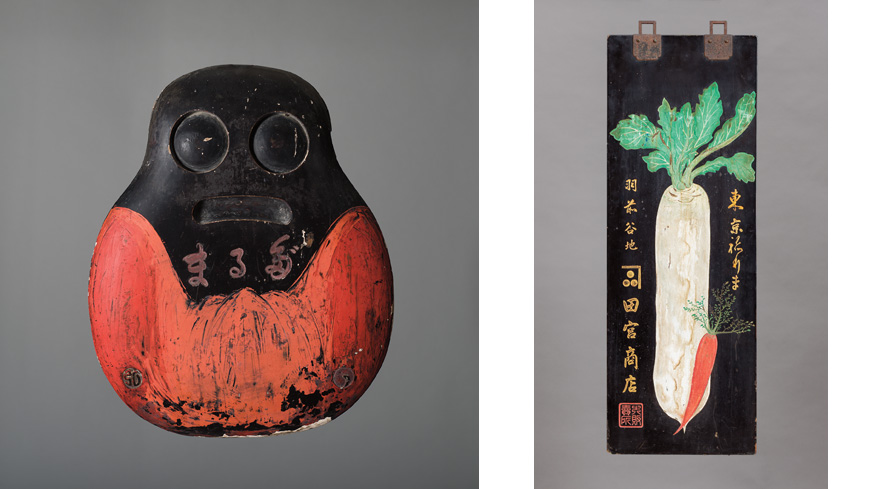Little information remains about the personal life of the artisan Kojiro Shimizu. His personality and interests, his passions and motivations — all are shrouded in mystery. What we know is that he worked in Kyoto in the late 19th and early 20th century and that he appeared to be on good terms with members of the business community. He also happened to be a master carver of kanban, the traditional shop signs of Japan, and on rare occasions, when he produced a particularly elaborate piece, he marked it with his seal, perhaps succumbing to a brief moment of pride. Had he not done so, he would likely be completely unknown to us.
Though some forms of kanban can be traced all the way back to the Nara Period (710-794), it was from the 17th century that they acquired their peculiar importance, during the long Pax Tokugawa, when the merchant class gained its power and pelf. After consolidating their position as rulers of Japan in the early 1600s, Tokugawa Ieyasu and his successors enacted new rules. For example, they confined samurai to castle towns and required that daimyo spend alternate years in the capital, which fostered rapid urbanization along with the development of a wide network of roads, the most famous of which was the Tokaido and its 53 relay stations. These measures in turn helped stimulate domestic commerce and eventually brought about the emergence of powerful trading houses such as Mitsui and Sumitomo.
Ironically, perhaps, the Tokugawa Shogunate had little respect for merchants. In theory at least, businessmen were confined to the lowest rung of the social order, behind samurai, farmers and artisans. This state of affairs is colorfully illustrated by a popular aphorism of the times which stated that: "The offspring of a toad is a toad; the offspring of a merchant is a merchant." None of this, however, prevented traders from becoming rich, but with all paths to political power closed, they had to find creative ways to display their influence. Shop signs, the most lavish of which could cost a small fortune, were one such vehicle.

















With your current subscription plan you can comment on stories. However, before writing your first comment, please create a display name in the Profile section of your subscriber account page.